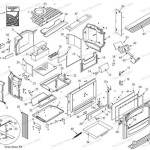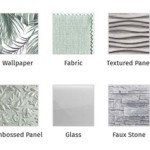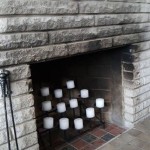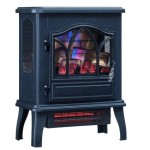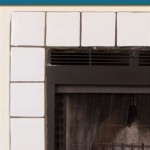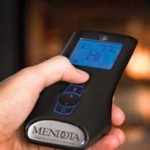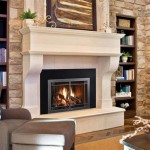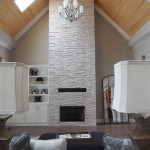Adding a Hearth: Integrating a Wood-Fueled Fire Feature into Your Home
Integrating a wood-fueled fire feature into a residence lacking one initially requires meticulous planning, adherence to building codes, and a thorough understanding of structural and safety considerations. This undertaking is not a simple do-it-yourself task and typically necessitates the expertise of qualified professionals, including contractors, certified chimney sweeps, and local code enforcement officers. The process involves preparing the space, ensuring proper ventilation, installing the unit and its accompanying chimney system, and finally, completing the necessary inspections.
The appeal of a real fire remains strong for many homeowners. A wood-fueled fire feature provides supplemental heat, creates a visually appealing focal point, and enhances the overall ambiance of a living space. However, unlike gas or electric alternatives, a wood-fueled fire feature requires careful consideration of fuel storage, waste disposal (ash), and regular maintenance to ensure safe and efficient operation. This article outlines the key steps involved in adding such a feature to a home lacking an existing fireplace or chimney system.
Initial Assessment and Planning
The initial phase involves a comprehensive assessment of the home's existing structure, local building codes, and homeowner association regulations (if applicable). This assessment should determine the feasibility of the project, identify potential challenges, and establish a realistic budget. Crucially, a load-bearing assessment of the proposed location is imperative. A wood-fueled fire feature, along with its accompanying hearth and chimney, can weigh hundreds or even thousands of pounds. The floor must be capable of supporting this weight without compromising structural integrity. Consulting with a structural engineer is often necessary to confirm the load-bearing capacity and recommend any necessary reinforcements.
Local building codes dictate specific requirements for clearances to combustible materials, chimney height, and fire safety features. These codes vary depending on the jurisdiction and are designed to minimize the risk of fire and carbon monoxide poisoning. It is the homeowner's responsibility to obtain the necessary permits before commencing any work. Failure to comply with building codes can result in fines, delays, and even the forced removal of the installation.
Furthermore, the homeowner should consider the aesthetic integration of the fire feature into the existing décor. Factors such as the style of the fire feature (e.g., traditional masonry, contemporary steel), the type of facing material (e.g., brick, stone, tile), and the overall dimensions must be carefully considered to achieve a cohesive and visually appealing result. It is advisable to consult with an interior designer or architect to develop a comprehensive design plan that addresses both functional and aesthetic requirements.
Finally, a detailed budget should be created, encompassing all costs associated with the project, including materials, labor, permits, and inspections. It is prudent to obtain multiple quotes from qualified contractors to ensure competitive pricing. A contingency fund should also be included to account for unforeseen expenses that may arise during the installation process. This initial planning stage is arguably the most important, laying the groundwork for a successful and safe installation.
Chimney System Installation
The chimney system is a critical component of any wood-fueled fire feature, responsible for safely venting combustion gases and preventing the buildup of creosote, a flammable substance that can lead to chimney fires. When no existing chimney is present, a new chimney system must be installed, which typically involves constructing a new masonry chimney or installing a prefabricated metal chimney.
A masonry chimney is a traditional option, offering durability and aesthetic appeal. However, it is also the most expensive and labor-intensive option, requiring specialized skills and expertise. A prefabricated metal chimney, also known as a Class A chimney, is a more cost-effective and versatile alternative. These chimneys are designed for use with wood-fueled appliances and consist of multiple layers of insulated metal, providing excellent draft and fire safety. Class A designation means it has been tested and certified to withstand the high temperatures associated with wood-fueled fires.
Regardless of the chimney type chosen, proper installation is crucial. The chimney must extend at least three feet above the highest point where it passes through the roof and at least two feet higher than any structure within ten feet. This ensures adequate draft and prevents downdrafts that can cause smoke to enter the home. The chimney must also be properly sealed to prevent water leaks and air infiltration. The chimney flashing, which seals the chimney to the roof, is a particularly vulnerable area and must be installed with meticulous care.
Connecting the fire feature to the chimney requires a flue connector, typically made of heavy-gauge black stovepipe. The flue connector must be properly sized to match the outlet of the fire feature and the inlet of the chimney. It must also be securely attached using screws and sealed with high-temperature sealant to prevent leaks. The flue connector should be as short and straight as possible to minimize resistance to airflow. Any elbows or bends in the flue connector will reduce draft and increase the risk of creosote buildup. Professional installation and inspection are vital to ensure the integrity and safety of the chimney system.
Installation and Safety Measures
Once the chimney system is in place, the fire feature itself can be installed. The installation process will vary depending on the type of fire feature chosen, but certain fundamental principles apply to all installations. The fire feature must be installed on a non-combustible hearth extension that extends at least 16 inches in front of the firebox opening and 8 inches to each side. This hearth extension protects the floor from sparks and embers that may escape from the firebox. The hearth extension must be made of a non-combustible material such as brick, stone, or tile.
Clearances to combustible materials are critically important. The fire feature must be installed at a safe distance from walls, ceilings, and furniture to prevent the risk of fire. These clearances are typically specified by the fire feature manufacturer and must be strictly adhered to. If the required clearances cannot be met, heat shields or other protective measures may be necessary. These shields are designed to reduce the surface temperature of combustible materials and prevent them from igniting.
Smoke detectors and carbon monoxide detectors are essential safety devices that should be installed in the vicinity of the fire feature. Smoke detectors provide early warning of a fire, while carbon monoxide detectors alert occupants to the presence of this odorless and deadly gas. Carbon monoxide is a byproduct of incomplete combustion and can be produced by a malfunctioning or improperly vented fire feature. It is imperative to install detectors on every level of the home, following manufacturer instructions for placement and maintenance. Regular testing of these devices is crucial to ensure they are functioning properly.
Proper ventilation is also essential to ensure safe and efficient operation. The fire feature requires a sufficient supply of air to support combustion. In tightly sealed homes, it may be necessary to install an outside air kit to provide a dedicated source of combustion air. This kit draws air from outside the home, preventing the fire feature from drawing air from other areas of the house and creating negative pressure. Negative pressure can interfere with the operation of other appliances, such as furnaces and water heaters, and can also draw dangerous gases into the home.
Finally, it is crucial to educate all occupants of the home on the safe operation and maintenance of the fire feature. This includes proper fueling techniques, safe ash disposal procedures, and regular chimney cleaning. A certified chimney sweep should inspect and clean the chimney at least once a year to remove creosote and ensure proper draft. Neglecting chimney maintenance is a leading cause of chimney fires.
Adding a wood-fueled fire feature to a home without one is a significant undertaking that requires careful planning, meticulous execution, and a commitment to safety. By following these guidelines and consulting with qualified professionals, homeowners can enjoy the warmth and ambiance of a real fire without compromising the safety and integrity of their home.

A Wood Burning Or Pellet Stove Without Chimney Absolutely Home And Hearth Stoves Fireplaces S Service

Installing A Wood Burner Without Chimney Direct Stoves

Your Home Doesn T Have A Fireplace And You Want To Add One

How To Install Fireplace At Your Home Happho

Mobile Home Fireplaces Clayton Studio

Converting A Fireplace To Wood Burning Stove Chesneys

How To Heat Your House With Just A Wood Burning Stove Chesneys

Your Guide To Wood Stove Installation Full Service Chimney

5 Types Of Fireplaces For Apartments Homes Without Chimneys Modern Blaze

How To Install Fireplace At Your Home Happho
Related Posts

